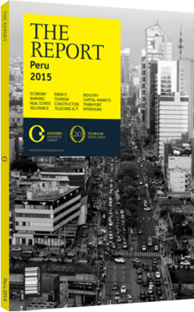José Gallardo Ku, Minister of Transport and Communications: Interview

Interview: José Gallardo Ku
The inauguration of the Port of Paita illustrates a strategy to decentralise operations from El Callao. What other moves have potential in this respect?
JOSÉ GALLARDO KU: With most of the country’s exports and imports going through ports, improving infrastructure is key to finding an integrated solution to the logistics system. Port projects such as Paita, Salaverry and San Martin in Pisco will help take a load from El Callao, while reducing costs, as companies will no longer be obligated to go all the way to El Callao. For these projects to be successful there has to be investment in providing access infrastructure and creating logistical areas for import-export companies to use.
The development of more ports will also create potential for coastal trade, which will help lower costs and reduce road traffic. It is not only sea ports that have potential for growth, but also fluvial ports, and for these there is a promising project that will dredge 2300 km of rivers to increase their transport capacity and therefore take full advantage of the jungle’s potential. The fact that there are many international investors interested in creating public-private partnerships (PPPs) for ports shows the potential and the willingness to work with the government.
Buses are the most used means of transport, yet costs per km are high. What is the solution to this?
GALLARDO: The main issue centres around the most important road in the country, the Panamericana, which crosses from Ecuador to Chile. This has created economic growth and development, but traffic has limited its potential. The next project is to build a highway that will run parallel to this one but closer to the mountains. This will help reduce traffic while also integrating other parts of the country.
The project will be carried out mainly through public investment, but the aim is to award concessions for at least three sections. This, combined with projects financed via PPPs and private initiative, will help not only upgrade and expand road infrastructure but also maintain it, thus ensuring its long-term functionality. Better roads will help reduce costs and make the country more efficient, and thus more competitive.
With logistic costs taking a toll on competitiveness, how can Peru reduce the gap?
GALLARDO: The government is working on a National Logistics Plan that takes into consideration the country’s greatest potential and evaluates the best options for exports. Diversifying ports and airports is a key element for this plan to be successful. This would increase competition and therefore bring prices down. One of the main bottlenecks is the Central Road, which connects Lima to the central region.
The trans-Andean tunnel will help facilitate a railway and provide an alternative to overland transport, thus reducing costs. There is also a private initiative to build a railway parallel to the coast that would greatly increase connectivity between cities. While not neglecting Lima’s potential as a logistics hub, the focus needs to be on decentralisation to reduce costs and become more competitive.
The 2019 Pan-American Games provide a deadline for improving transport in Lima. What are the top priorities in this regard?
GALLARDO: The main project is Metro Line 2, which has been awarded. Construction will begin in the coming months. This will create an east-west axis to complement the existing north-south one from the first metro line. It will also create a more integrated transport system, as it will link some of the city’s most populated areas. There are also interesting projects to expand Line 1, while the process has begun for Line 3. To this we have to add projects to create suburban trains that will link the outskirts with the metro lines. The success of these concessions has motivated the government to seriously consider developing them in other cities, such as Arequipa. This will increase their growth potential and work as a decentralisation tool.
You have reached the limit of premium articles you can view for free.
Choose from the options below to purchase print or digital editions of our Reports. You can also purchase a website subscription giving you unlimited access to all of our Reports online for 12 months.
If you have already purchased this Report or have a website subscription, please login to continue.

